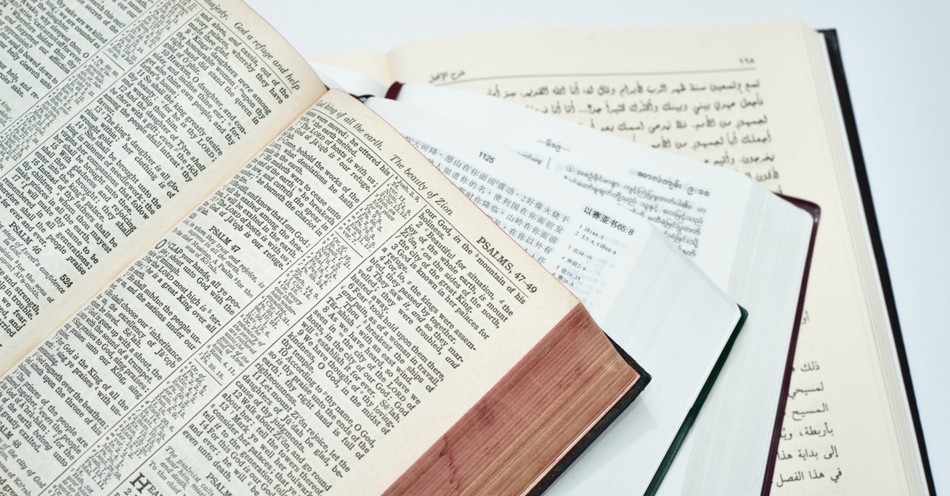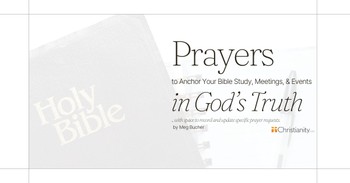Many Bible Versions from Many Manuscripts
One of the reasons we see different versions of the Bible is because of the number of manuscripts available. There are over 5,800 Greek New Testament manuscripts known to date, along with over 10,000 Hebrew Old Testament manuscripts and over 19,000 copies in Syriac, Coptic, Latin, and Aramaic languages.
The Oldest papyrus fragment is in England at the John Rylands Library of Manchester University called, P52. The fragment dates no later than AD 150 and as early as AD 100.
Manuscript Families
Scholars have divided these ancient manuscripts into two main families: Alexandrian text-type (also called Neutral or Egyptian) and Byzantine text-type (also called the Majority Text).
- The Byzantine text type looks at all the manuscripts and determines the final reading by what the majority of the manuscripts say.
- Rather than looking for a collective majority, the Alexandrian text type looks mainly at the date of the manuscript and the region of the world it’s from.
Translation Philosophy
Once the manuscript families are determined for the translation of the Bible, translators need to decide what translation philosophy they will follow. There are 3 main philosophies: formal equivalence, functional equivalence, and optimal equivalence.
1. Formal Equivalence focuses on translating word-for-word and strives to be as literal as possible. Bibles that fall under the formal equivalence philosophy would be the ESV, KJV, and NASB.
2. Functional Equivalencefocuses on a thought-for-thought (Dynamic equivalence) translation. Its goal is to make the text easy to read and easier to understand. Bibles that fall in this camp are would be the NLT and NIV.
3. Optimal Equivalence is a balance of word-for-word and though-for-thought where needed for the reader to better understand. The HCSB would be considered an optimal equivalence approach.
You will also find Bibles that are paraphrased but lack accuracy and sometimes go beyond a thought-for-thought approach. These Bibles are good to better understand the story or text, but for expository preaching it’s best to stick with a word-for-word or thought-for-thought Bible.
Why are there so many English versions of the Bible?
With so many manuscripts (some differing from one another) and different translation philosophies, we have about 50 main versions of the English Bible today. If we count revisions, we are well into the hundreds of Bibles.
Another reason there are many versions of the English Bible is that over time the English language has changed dramatically. Old English sounds and reads differently than modern English. Some readers might be confused while reading certain passages, and certain words have changed in meaning.
For example: In the KJV you will find that in 1 Corinthians 13 instead of using the word “love” it uses “charity.” Charity today means something completely different then what it meant back in the 17th century. Today we use the word “love,” and when we speak of charity, we are referring to the act of being generous or to an organization.
Another example is in 2 Timothy 2:15. The modern NIV says, “Do your best to present yourself to God as one approved” in the modern versions of The Bible. In the KJV, it says, “Study to show thyself approved.” Back then study didn’t mean to learn new things but simply to do your best.
Before the KJV, there was the Wycliffe Bible, completed in 1382, and the Tyndale Bible (full New Testament), published in 1526.
Below are 12 of the common Protestant Bibles used today. Here is a list of more best-known translations along with a brief description of each.
Amplified Bible (completed in 1965)
Christian Standard Bible (Completed in 2017)
Holman Christian Standard Bible (Completed in 2004)
The King James Bible (Completed in 1611)
The Living Bible (Completed in 1971)
The Message (Completed in 2002)
New American Bible (Competed in 1970)
English Standard Version (Completed in 2001)
New Living Translation (Completed in 1996)
New International Version (Completed in 1978)
New American Standard Bible (Completed in 1971)
New King James Version (Completed in 1982)
Why Are There So Many Bible Translations?
(The following is a transcript of the video above, edited for readability)
I think two reasons there are so many Bible translations. One is because of a desire to have the most accurate translation from the original languages into English so that I know exactly what God is saying. One of the things that we do not teach enough or we in a sense demean, and I think it's because our Christianity in the United States of America is very shallow, and I think the church is very shallow in its preaching and teaching because it's not teaching through the Bible book by book. But we forget that every word is God-breathed. God makes it very, very clear in Second Timothy. He makes it very clear all throughout the Old Testament, "Hear the word of the Lord. This is the word of the Lord. This Is what God says."
Many of the translations, the ESV, for instance, I know Crossway and I know the men there, and their desire, because they honor the word of God and because they know every word is important, have striven through the ESV to come up with the most accurate word for word translation. The NIV is a thought for thought. I do not use the NIV. I use the ESV and I use the New American Standard. And I use those because sometimes I'll check one against the other just to see what they did with this word. So there's that desire to so honor God and to so value God that every word you want to be accurate because you're to know God. So the translations, transliterations that come down, or the paraphrases, I wouldn't use personally. I mean, they may seem good and people quote them, but I think that's because we're touchy-feely because it's about my emotions and it's about me instead of about God.
I mean, this is my own personal view. Please know that. So they do that. I would hate to stand before God and say, "Your word was not understandable the way it was." So I took it and I rewrote it and brought it into the modern language so that people could understand it. To me, that demeans God. It demeans his wisdom. It demeans his ability to communicate. And even if they said, "I was led by God to do this," I would have to say, "But I was not led by God to read it." Because I want to know what God says. So there's the nobility. The second one is to try and make God more understandable to people. So we have the paraphrases or we have the rewrites of God's word. I think the third reason that there are so many Bibles out is because it's money-making, money-making. So they came to me and they wanted me to do a study bible.
I said, "What are you thinking?" They said, "We want to put your notes in the word of God." And I said, "But our whole ministry, Precept Ministries International, was not to teach people what I believe or what our staff believes, but how to discover truth for themselves. I believe the most important Bible that any Christian can have is an Inductive Study Bible that does not tell you what to believe but helps you discover the truth for yourself.
Bible Versions and Bible Translations
Bible translations and versions of the Bible are terms often used interchangeably, but we should look at these terms as separate. Translations have to do with language, and versions have to do with difference or variety. Therefore, we can have an English translation of the Bible and 50 versions in just that one language.
English speakers have been blessed with many translations and versions of the full Bible. But what about the people who speak one of the other 7,360 living, known languages? According to Wycliffe Global Alliance’s 2018 data, 1.5 billion people still need either portions or the entirety of the Bible translated into their language.
Wycliffe Global Alliance reported that at least some portion of the Bible has been translated into 3,350 languages. This number includes over 680 languages with complete Bible translations, over 1,500 languages with complete New Testaments, and over 1,000 with some Bible portions and stories.
This tremendous milestone is the result of hard work by all involved. And the hard work continues toward translating the Bible into the remaining living languages to provide the whole world with access to God’s word.
Edward Antonio is the Founder of Elevating Your Life and a student of theology and church history. He lives in Orange County, CA and is part of Harvest Christian Fellowship. Find him on Instagram at: https://www.instagram.com/mredwardantonio/ or answering Bible questions at: https://elevatingyourlife.org/.
Photo Credit: ©Getty Images/One Clear Vision
This article is part of our Bible resource for understanding the significance and meaning of biblical phrases and ideas. Here are our most popular Bible articles to grow in your knowledge of God's Word:
Promises of God in the Bible
Is "This Too Shall Pass" in the Bible?
What Was the Ark of the Covenant?
Top 10 Bible Stories for Kids
“Iron Sharpens Iron” in Proverbs 27:17
"Fearfully and Wonderfully Made" in Psalm 139
“Be Still and Know That I am God” in Psalm 46:10
"No Weapon Formed Against Me Shall Prosper" - Isaiah 54:17

.jpg)


.jpg)